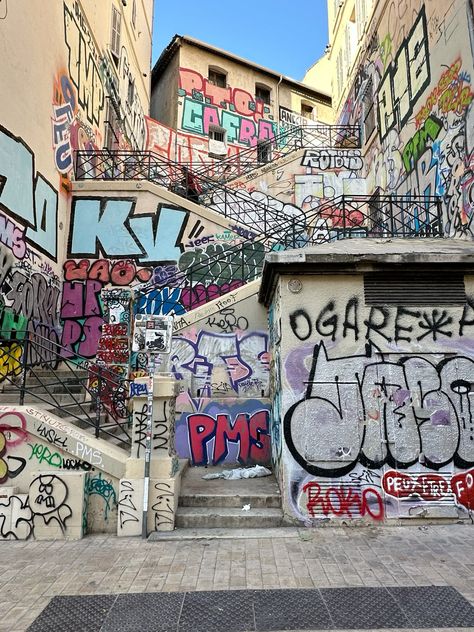Street Art: The Evolution of Expression and Impact on Society
Street art, often seen as rebellious or unconventional, has evolved over the years into a significant cultural movement that has transformed how we perceive art in public spaces. What started as graffiti on walls, trains, and buildings has now become a globally recognized form of artistic expression, deeply influencing urban landscapes and society as a whole. With vibrant colors, bold messages, and innovative techniques, street art challenges traditional notions of art, giving voice to underrepresented communities, and even serving as a tool for social and political change.
In this article, we’ll dive deep into the history, impact, and significance of street art, exploring how it has shaped modern culture and continues to inspire people across the globe.
History
Now, as we know it today, began its rise in the 1960s and 1970s, when graffiti artists began marking their territory with spray paint on buildings and subway trains in New York City. Early It was often associated with gangs and rebellion, with its messages serving as both territorial markers and expressions of defiance against authority. Over time, however, the medium expanded beyond simple tags and graffiti to include more intricate and creative designs, incorporating elements of pop culture, political statements, and social commentary.
By the 1980s, It began to gain wider recognition, with artists such as Jean-Michel Basquiat, Keith Haring, and Banksy pushing the boundaries of what could be considered art. These artists broke down traditional artistic norms by taking their work out of galleries and into the streets, challenging the status quo and making art more accessible to the masses. This shift paved the way for street art to evolve into a legitimate art form.
Key Figures
- Banksy: Perhaps the most famous and enigmatic street artist in the world, Banksy’s works combine dark humor, political commentary, and clever visuals. His pieces often challenge authority, highlight social issues, and poke fun at consumerism, war, and politics. Despite his anonymity, Banksy’s art has earned him global recognition and widespread admiration.
- Jean-Michel Basquiat: Starting as a graffiti artist in New York City, Basquiat’s work moved into galleries, where he became a pioneer of neo-expressionism. His bold, raw paintings, influenced by street culture, racial inequality, and social issues, made him one of the most influential artists of the late 20th century.
- Keith Haring: Haring’s work, which began as subway chalk drawings, became iconic in the 1980s. His colorful, cartoonish figures and symbols, which often carried messages of love, unity, and social justice, remain deeply influential in both street art and pop culture.
- Shepard Fairey: Known for his “Obey Giant” campaign and the famous “Hope” poster of Barack Obama, Fairey’s work blends propaganda, graphic design, and street art. His politically charged pieces tackle issues like corporate control, environmentalism, and social justice.
- RETNA: A street artist known for his unique use of calligraphy and typography, RETNA’s distinctive style combines ancient script with modern graffiti techniques, bringing together cultures from around the world.
Daily Life Impact
It has become an integral part of urban life, especially in cities where murals and graffiti are prevalent. Here are a few ways street art impacts daily life:
- Revitalizing Communities: It can breathe new life into forgotten or neglected areas of a city. Murals and public art projects often serve as a means of urban regeneration, turning dull and derelict spaces into vibrant, visually stimulating environments. These works of art can increase foot traffic, attract tourism, and even boost local economies.
- Raising Awareness: It is often used as a tool to raise awareness about social, political, and environmental issues. Artists use public spaces to communicate messages about racism, inequality, climate change, and other pressing concerns. By bringing these issues to the streets, street art engages a broader audience and encourages people to think critically about the world around them.
- Empowering Communities: Many projects are community-driven, empowering local residents to take ownership of their environment. By involving locals in the creation of public art, these projects can foster a sense of pride, belonging, and cultural identity. In some cases, street art has been used as a form of resistance, with marginalized communities using the medium to share their stories and voices.
- Creative Expression: For many artists, It is a way to express themselves freely without the constraints of formal galleries. The streets become an open canvas, offering endless possibilities for creativity. For spectators, this means exposure to a wide range of artistic styles, from abstract murals to politically charged street poetry.
- Challenging the Status Quo: One of the most significant impacts is its ability to challenge societal norms and question authority. Many street artists use their work to comment on political corruption, corporate greed, and the commercialization of art. By placing their work in public spaces, artists make art accessible to everyone, encouraging public engagement with important issues.
Significance
It holds profound significance in modern society for several reasons:
- Art for the People: It democratizes art by bringing it to public spaces, making it accessible to anyone, regardless of their social or economic background. It breaks down the barriers that typically separate art from the public, offering an alternative to traditional galleries and museums.
- Social Commentary: It is often used as a form of protest, making bold statements about issues such as police brutality, inequality, and the environment. By bringing these messages into the streets, artists are able to reach a wider audience and foster dialogue around critical topics.
- Cultural Expression: It is a reflection of the cultural, social, and political climate of a time. From the rebellious art of early graffiti to the global phenomenon of contemporary street art, the movement provides valuable insights into the pulse of society. It represents the struggles, dreams, and desires of people from all walks of life.
- Tourism and Economic Impact: It has become a major attraction for tourists, with cities like Berlin, New York, London, and Melbourne becoming hotspots for street art tourism. In addition to drawing visitors, street art contributes to the local economy by supporting artists, art galleries, and events related to public art.
- Innovation and Style: The constantly evolving nature of street art pushes the boundaries of creativity and design. From stencil art and wheat pasting to large-scale murals and 3D street illusions, street artists continue to innovate and experiment with new techniques. This spirit of creativity and exploration inspires both emerging artists and established creators.
FAQs
- What is? It refers to visual art created in public spaces, often using unconventional mediums like spray paint, stencils, posters, or chalk. It includes forms like graffiti, murals, and installations, and is often associated with urban culture.
- Who are the most famous street artists? Famous street artists include Banksy, Jean-Michel Basquiat, Keith Haring, Shepard Fairey, and RETNA, among others.
- Why is important? It is important because it provides a platform for creative expression, engages the public in social and political issues, and makes art accessible to everyone. It challenges traditional notions of art and culture.
- Is legal? While It is celebrated in many places, it can sometimes be considered illegal, especially if it involves painting or drawing on public or private property without permission. However, many cities are now embracing street art through organized mural projects.
- How does affect cities? It can revitalize urban spaces, promote tourism, and create a sense of community identity. It also serves as a vehicle for social commentary, allowing artists to address issues such as inequality, politics, and the environment.
Conclusion: The Power and Legacy
It has transformed from a form of rebellion into a globally recognized art movement with profound cultural, social, and economic impacts. It has empowered marginalized communities, sparked political dialogue, and breathed life into cityscapes. Whether you see it as vandalism or a form of artistic genius, there’s no denying that street art has had a lasting and positive effect on society, making the streets a canvas for creativity, expression, and change.










